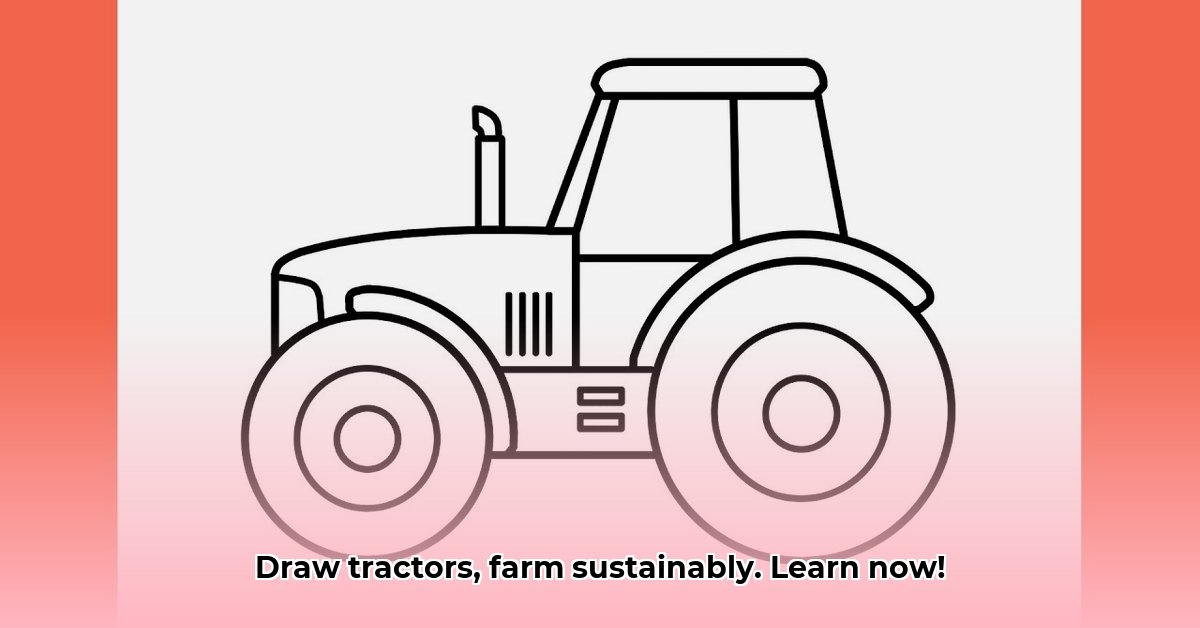
Sustainable agriculture can seem daunting, filled with complex terms and intricate processes. But what if learning about it was easier, more engaging, and even fun? This guide shows how the power of visual learning can revolutionize agricultural education and outreach, making sustainable practices accessible to everyone, regardless of literacy level or technological access. We'll explore why visuals are so effective, and provide a step-by-step guide to creating and sharing your own impactful visual learning tools. For more on farm equipment, check out these small tractor attachments.
Why Visuals Thrive in Sustainable Farming
Effective communication is the cornerstone of successful sustainable farming. We need to convey crucial information clearly to a diverse audience – experienced farmers, novice growers, students, and community members – some of whom may have limited literacy or technological access. Visual aids bridge this communication gap, transforming complex concepts into easily understandable steps. A well-designed diagram can explain crop rotation more effectively than lengthy text, while a short video can demonstrate water harvesting techniques in a far more engaging way. Visuals enhance understanding, improve knowledge retention, and, most importantly, inspire action.
Think about the impact of a simple drawing of a tractor: it's not just art; it helps visualize the machinery, its parts, and how it functions—fundamental knowledge for understanding modern farming. Isn't a picture worth a thousand words, especially when those words are about sustainable practices?
Understanding Your Audience: Connecting Through Visuals
Before designing any visual, consider your target audience. Are you working with experienced farmers or new growers? What's their technological proficiency? Understanding their background is crucial for tailoring your visuals effectively. A simple line drawing might suffice for explaining basic planting techniques to children, while a detailed infographic would be more appropriate for explaining complex irrigation systems to seasoned professionals. The goal is to connect with your audience on their level, making learning as intuitive and accessible as possible.
Crafting Effective Visual Aids: A Practical Guide
Creating compelling visuals requires thoughtful planning and a strategic approach. Remember, clarity and simplicity are paramount.
Keep it Simple and Clear: Avoid overwhelming your audience with excessive detail. Focus on one key message per visual. A clear diagram showing composting steps is far more effective than a cluttered image.
Harness the Power of Color: Strategic color use dramatically enhances understanding and memorability. Green might represent growth, brown the soil, and blue the water. Use color to tell a story.
Use Familiar Imagery: Employ imagery that resonates with your audience's experiences. Using locally relevant images makes the information more relatable and memorable.
Minimize Text: Visual learning emphasizes seeing, not reading extensive text. Use concise captions and labels; avoid overwhelming the viewer with words.
Iterate and Refine: Test your visuals on your target audience before widespread dissemination. Gather feedback and adjust accordingly. This iterative process is crucial for optimizing impact.
Sharing Your Visuals: Reaching a Wider Audience
Creating impactful visuals is just the first step. Effective distribution is equally vital.
- Interactive Workshops: Hands-on sessions allow for direct engagement and immediate feedback.
- Mobile Apps: Leverage mobile technology to make visual resources readily available.
- Community Centers & Libraries: Partner with local organizations to reach a wider audience.
- Social Media: Utilize platforms like Instagram and Facebook to share visuals with a broader reach.
- Printed Materials: Printed guides and leaflets remain effective, particularly for those with limited internet access.
Measuring Impact: Assessing Your Visuals' Effectiveness
To ensure your visual aids are achieving their objectives, employ robust evaluation methods.
| Method | Description | Data Collected |
|---|---|---|
| Pre/Post-Tests | Assess knowledge before and after exposure to visuals. | Changes in knowledge, understanding, and application of sustainable practices |
| Surveys | Gather feedback on comprehension, engagement, and the usefulness of the visuals. | Satisfaction levels, usability, and suggestions for improvement |
| Observation | Observe how people use the materials in real-world settings. | Adoption rates and correct application of learned techniques |
| Focus Groups | Conduct group discussions to gather in-depth feedback and insights. | Detailed understanding of participant experiences and perspectives |
Data-driven evaluation allows for continuous improvement, ensuring your visuals remain effective and impactful.
Conclusion: A Visual Revolution in Sustainable Agriculture
Visual learning is not merely a supplementary tool; it's a powerful strategy that can transform the way we teach and learn about sustainable agriculture. By embracing visuals, we can create a more accessible, engaging, and effective learning experience for all. Let's work together to create a brighter, more sustainable future, one compelling visual at a time.